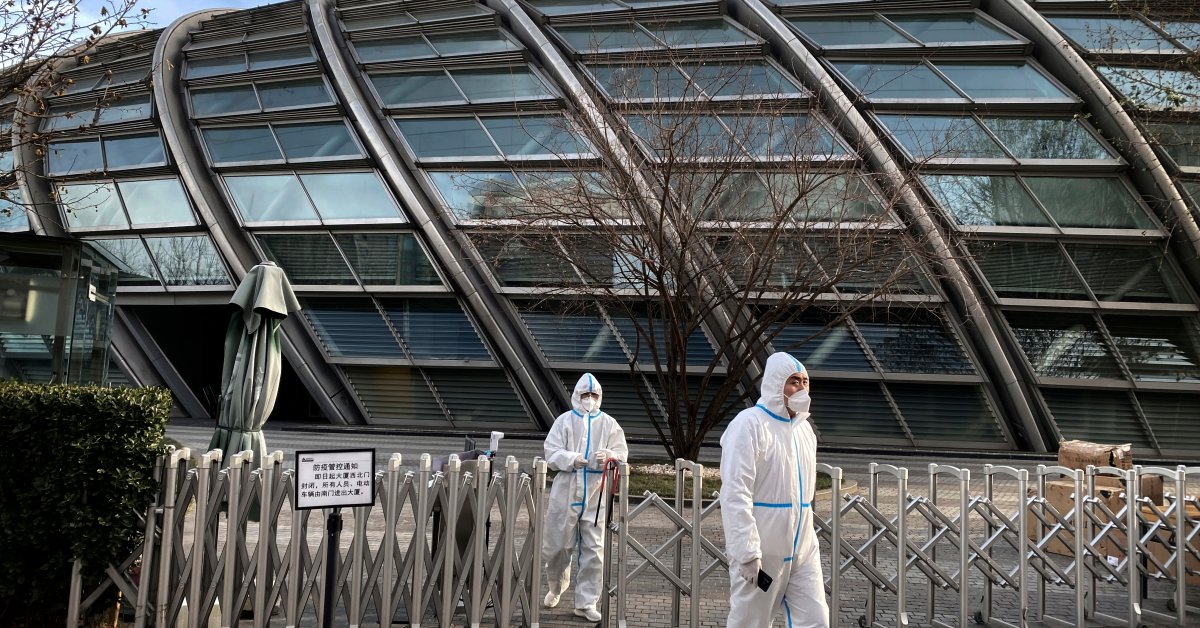Roughly a million people could die from COVID-19 in China by next year as a result of the country’s rapid abandonment of pandemic restrictions, a new study suggests.
Researchers worry that ill-prepared healthcare systems, low rates of vaccination among the elderly and ineffective vaccines will contribute to a massive and deadly COVID-19 surge that has already begun overwhelming hospitals in Beijing.
The country of 1.4 billion has had some of the strictest COVID containment measures in place since the pandemic began nearly three years ago, but the government began easing restrictions this month after a wave of fervent protests that began in November against President Xi Jinping’s zero-COVID policies.
Here’s what to know:
One million deaths
Reuters’ analysis of new data from the Institute of Health Metrics and Evaluation, concludes that COVID cases in China will peak around April, at which point there will have been 322,000 COVID-related deaths and a third of the country will be infected. Currently, China’s official death toll remains low at just over 5,000 deaths, compared to the U.S.’s more than one million. However, some question the Chinese government’s count accuracy. The World Health Organization (WHO) reports that there have been 311,113 confirmed deaths in China from COVID-19 since January 2020.
Gabriel Leung, former dean of medicine at the University of Hong Kong, and a group of other experts from Hong Kong who met with Chinese officials last month to share advice on lifting national COVID restrictions, also authored a report with similar findings.
Leung’s team estimates more than 900,000 deaths from the virus if China continues with its current plan to ease restrictions and that such extensive infections could result in new mutations. The report says that if the government delays such plans until January and prepares by improving vaccine rates and access to antiviral drugs, the total death rate could decrease by 26%.
Beijing overwhelmed
In the capital of Beijing, the situation has already become dire and healthcare workers describe being overwhelmed by patients and deaths. WHO reported 105,045 confirmed cases of COVID-19 in China on Dec. 12, a decline from the previous month, but omitting all unconfirmed cases.
Since the government announced new, less-restrictive policies on Dec. 7, people with COVID-19 that show mild or no symptoms are now permitted to recover at home, rather than a hospital. Under the changes, free PCR testing with quick results are more difficult to find.
Although about 90% of the country has been vaccinated against COVID-19, China relied on vaccines with lower efficacy rates than the mRNA-based vaccines that many other countries sought to produce. Only 65% of people over the age of 80 have been fully vaccinated and just 40% received their booster, a concerningly low rate for the country’s most vulnerable demographic.
Infection rates are expected to worsen around Jan. 22, the Lunar New Year, during celebrations.
Zero-COVID
Under China’s “zero-COVID” restrictions, movement was highly regulated in China through mandatory isolation at designated facilities and regional lockdowns during outbreaks. The government also implemented health-tracking apps, frequent COVID tests at workplaces, mass testing sites and proof of negative COVID tests to enter businesses and commercial establishments.
For many in China, the zero-COVID cessation is a win against the tight hold the government had on Chinese people’s movements and gatherings. Under the policies, people often had trouble accessing food and other resources during impromptu lockdowns with indefinite ends, healthcare systems became reliant on such measures rather than preparing for more cases and the country’s economy plummeted.
The government vowed to crack down on the widespread protests when they began in late November, which was rare to see at such a large scale and was compared to the violent Tiananmen Square protests from 1989. It’s unclear how many people were detained, but protesters who were arrested have shared reports of human rights violations and hostility in police custody.
More Must-Reads From TIME



